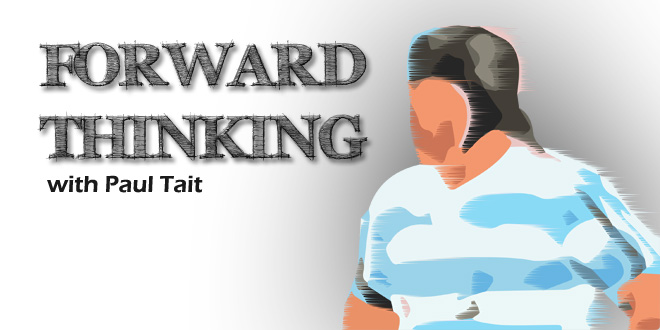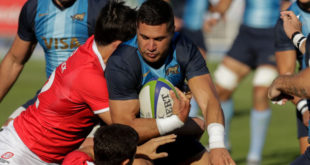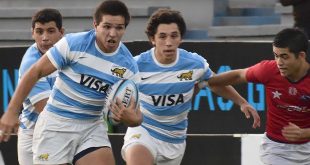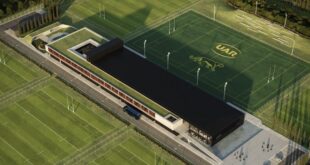Daniel Hourcade’s recent roster announcement was telling. He named a 25-man squad exclusively consisting of players based at home. Missing were all players contracted to foreign clubs – namely Horacio Agulla, Marcos Ayerza, Marcelo Bosch, Juan Figallo, Mariano Galarza, Juan Imhoff, Juan Martín Fernández Lobbe and Juan Pablo Socino.
Of them Agulla and Fernández Lobbe has officially retired from international duty while the others are victims of the clash between Argentina and the Barbarians taking place outside of the World Rugby International Release Window. The clubs are not required to release them but the new UAR policy also means they cannot be selected.
Back Home
The match against the Barbarians is the official birth of Argentina’s new selection policy which reserves selection to players based at home. In order to make the policy possible players have, in recent years, knowingly been encouraged to return home from abroad and the majority have done so.
Proof in the success of attracting players to return is in the Super Rugby roster. Of the 30 currently signed 17 have returned to Argentina after having played in England, France, Scotland or Wales. Some such as Tomás Lavanini and Pablo Matera have returned very young and are the better for it while others are veterans with vast experience at the top in Europe. Juan Martín Hernández being a case in point.
The Super Rugby roster remains incomplete with hooker Julián Montoya expected to be named and veteran Lucas González Amorosino to join following his current stint with Munster. Also expected to be signed is scrumhalf Felipe Ezcurra in place of Tomás Cubelli who is to play for Australian side the Brumbies.
In playing for a different Super Rugby team Cubelli will remain eligible unlike those based in Europe. The majority are either not in the frame any longer for international consideration or are well down on Hourcade’s list. The policies championed by Hourcade have given preference to those at home which saw Matías Alemanno, Santiago Cordero, Jerónimo De la Fuente, Facundo Isa, Tomás Lavanini, Pablo Matera, Julián Montoya, Matías Moroni, Guido Petti and Nahuel Tetaz Chaparro all shining at the World Cup.
Such players are all on the Super Rugby roster while names of the past are out of the picture playing in Europe. Take the following as clear-cut examples: Gonzalo Camacho, Manuel Carizza, Santiago Fernández, Nahuel Lobo, Benjamín Macome and Gonzalo Tiesi. In all cases they have been replaced in the senior squad by young players now on the Super Rugby roster.
The exceptions to this rule are Ayerza, Figallo, Galarza, Imhoff and Socino all of whom could, in theory, play at Rugby World Cup 2019. Of note is that Ayerza signed his new Leicester contract before the UAR confirmed the new selection law would be brought into effect. Another is Patricio Fernández who is also wanted back and, realistically, ought to be preparing for a return from Clermont as soon as possible.
Barbarians
Emiliano Boffelli, Felipe Ezcurra, Tomás Lezana and Ramiro Moyano are the new names in the team for the Barbarians. Three of them are on the Super Rugby roster already and the fourth just a matter of time. They are straight swaps for players missing. Boffelli comes in Bosch, Lezana for Fernández Lobbe, Ezcurra for Cubelli and Moyano for Imhoff.
Considering the present by looking to the past is telling in this instance. Bosch was not a regular until aged 27 while Boffelli is 20. Ezcurra, aged 22, and has been in the system since under 20 level as has the 21 year old Lezana. Moyano, meanwhile, is 25 which is how old Joaquín Tuculet was upon becoming first choice fullback. Similarly Imhoff was overlooked for Agulla and Camacho until becoming a first choice player under the Hourcade administration by which time he was already 25.
Time will tell as to the success of the policy change but early signs are encouraging. Hourcade took the team from 12th to 4th in the World in very quick time and now has a team set to lose comparatively few players to the process of transition when compared to Pumas teams of the past.
New Era
The new era officially starts on November 21 in London but it, in reality, began over a year ago when players based abroad began making their way home. Indeed this season in France only Francisco Goméz Kodela and Lucas Martínez have played as props in the Top 14 thus far. Quite remarkable considering the numbers from the past.
Indeed in 2007 Argentina had 30 players in France and just as many in Italy. Argentina’s World Cup team nonetheless had Felipe Contepomi playing in Ireland and Marcos Ayerza, Juan Martín Fernández Lobbe, Ignacio Fernández Lobbe, Juan Manuel Leguizamón and Martín Schusterman all playing in England.
The contemporary versions of such players were not allowed to get away. That is, to say they mostly never left Argentina and of those who did the pick of the bunch are contracted to the UAR. It is telling to consider the facts that Stade Français were interested in Cordero, that Isa spent time with Toulon, that Sánchez and Tuculet are back young unlike their 2007 versions Hernández and Corleto.
The 2015 Pumas side arguably greater talent to that of 2007. What lacks overall is the seasoned experience of professional club rugby which is what Super Rugby will resolve. The difference from 2007 to 2015 is the players overwhelmingly came through the PladAR system which was created specifically to bolster Argentine rugby. That it has done with the rise from u20s to senior level having been greatly facilitated and championed by Hourcade.
The transition has taken great effort and has involved hard decisions with certain players having their international careers cut short to prioritize the production line. It has meant the reliance on foreign leagues has ended and allows to aim high. Watch for Argentina to progress further and, within two years, achieve the missing scalp of a win against New Zealand.
 Americas Rugby News Rugby news from across the Americas!
Americas Rugby News Rugby news from across the Americas!




